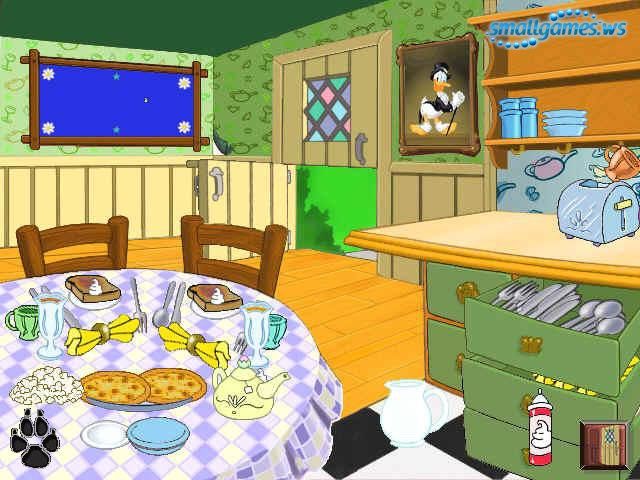

The P-Trap is the U-shaped pipe under your sink and can harbour some mean clogs.
#My disney kitchen clean up professional#
These are all terms you’ve probably heard from professional plumbers, hardware stores, and DIY websites. They’re like the Hungry Hungry Hippos of the drain world – they won’t stop until the job is finished.īio-Clean is available through us – all you have to do is ask > Should I Check the P-Trap Myself? They’re also corrosive inside your plumbing, and introduce more chemicals to the water supply.īio-Clean contains bacteria that specifically eat the organic materials that are coating your drain. If you, a child, or a pet comes in contact with them, they could cause severe burns or other injuries. Bonus: it’s Canadian-made.Ĭhemical-filled cleaners are corrosive. We recommend Bio-Clean drain cleaner because it is natural, safe, and environmentally-friendly. When you need something with a bit more ‘oomph’, you’ll want an actual drain cleaning product. Invest in an Environmentally Safe Drain Cleaner While this is certainly a fun and oddly satisfying way to clear your kitchen drain, unfortunately, it won’t work on serious drain clogs or drains that seem to clog repeatedly. The fizzing and popping you hear is the base-acidic reaction that can cause slime and grease to loosen and dislodge in your kitchen sink. It’s a little low-tech, but for minor clogs, the baking soda/vinegar technique is known to be effective, and a natural alternative to chemical cleaners.īaking soda has a basic pH level which means it reacts well with the acidic pH level of vinegar. Pour a few cups of hot water directly down the drain to check for any improvements. Step 3: Our ½ cup of vinegar down the drain after the baking soda. Tip: A funnel will help direct the baking soda into the drain rather than around it. Step 2: Pour ½ cup of baking soda down the drain. Step 1: Wait for all the water to clear from the drain. It’s the old grade-school volcano science experiment, but with a twist. Use Baking Soda, Vinegar, and Boiling Water

Remember: If you have a garburator, make sure it is unplugged before trying this or any other drain clearing methods. If this doesn’t work, you may want to progress to another remedy. Pump firmly a few times before moving the plunger. Make sure your plunger is fit snugly over the drain. You can either sanitize your regular plunger with some soap and water, or pick up a sink-only plunger for a low price at a hardware store.įirst, run some warm water to try softening the clog – particularly if you suspect that grease is the problem. If it appears to be very small blockage that’s causing more of a slow drain than an outright blockage, your plunger is about to come in very handy. If you do find yourself with a kitchen sink that won’t drain, there are a few things you can try before you call us. They create major blockages that can damage your pipes and make a dent in your bank account. Some stray green onions, the odd noodle, and some strings of cheese left clinging to the plate all get swept into the sink and down the drain.Įven if you have a garburator, food scraps are a no-no. You’ve made a tasty meal, and now it’s clean up time. The same thing can happen with chemicals.

Over time, this scale will build up, and cause a clog. One sign you have mineral build-up is when your hot water is way too hot. It’s a white substances that adheres to your shower, bathtub, and yes – kitchen sink. When soap mixes with mineral-heavy water, it creates soap scum. ‘Soap is clean! How could that possibly be causing me problems?’ So every time you dump grease or oil down the sink, you’re systematically adding another layer of buildup to your pipes.Įventually, this will create a blockage, and your kitchen sink won’t drain. Grease and oil congeals at room temperature.

But many people wash it down the drain when they rinse the pan, never realizing that they’re actually harming their pipes. Have you ever seen bacon fat or butter sit in a pan at room temperature?Īt least when it’s in a pan or poured into a receptacle, you can properly dispose of it. When you do experience a kitchen sink blockage, chances are it’s because of one of these 3 things. It’s gross, it’s inconvenient, and it can become a huge problem for your plumbing.įrankly, it’s the last thing you want to see when you’re in the middle of meal-prep, or planning on having company. A blocked kitchen sink will ruin your whole day.


 0 kommentar(er)
0 kommentar(er)
